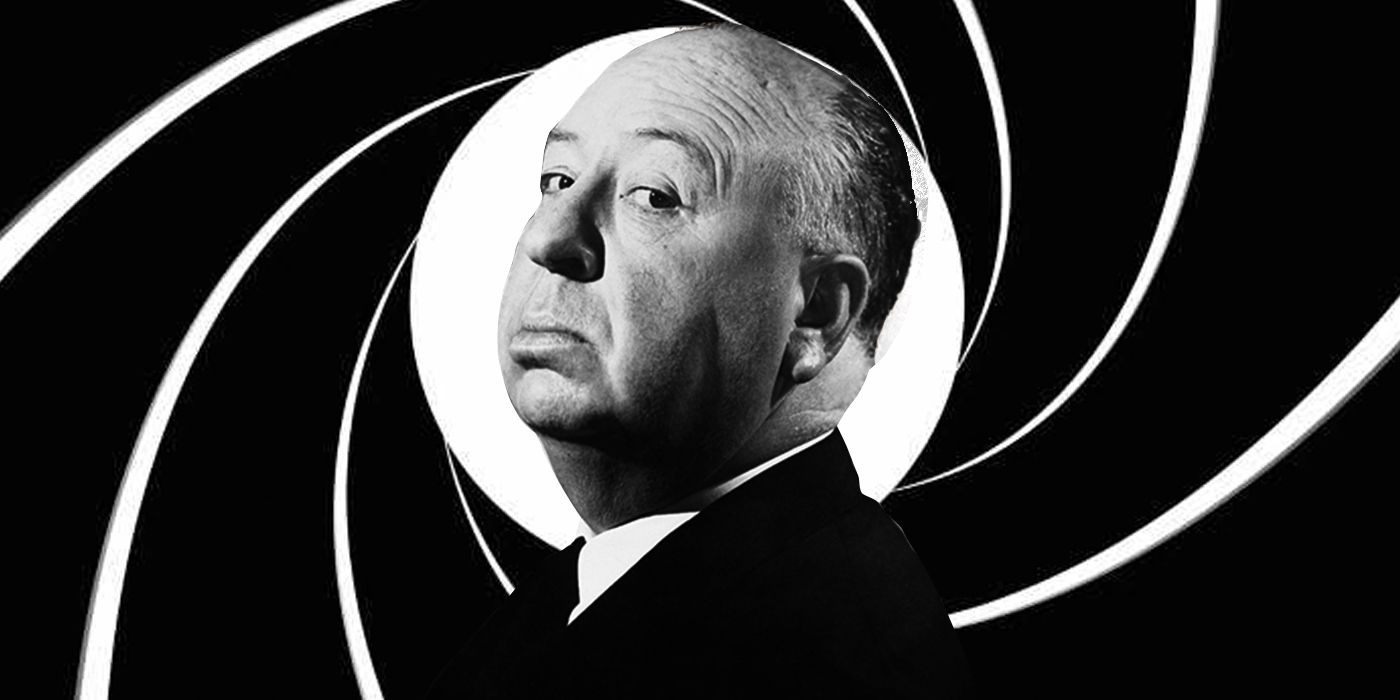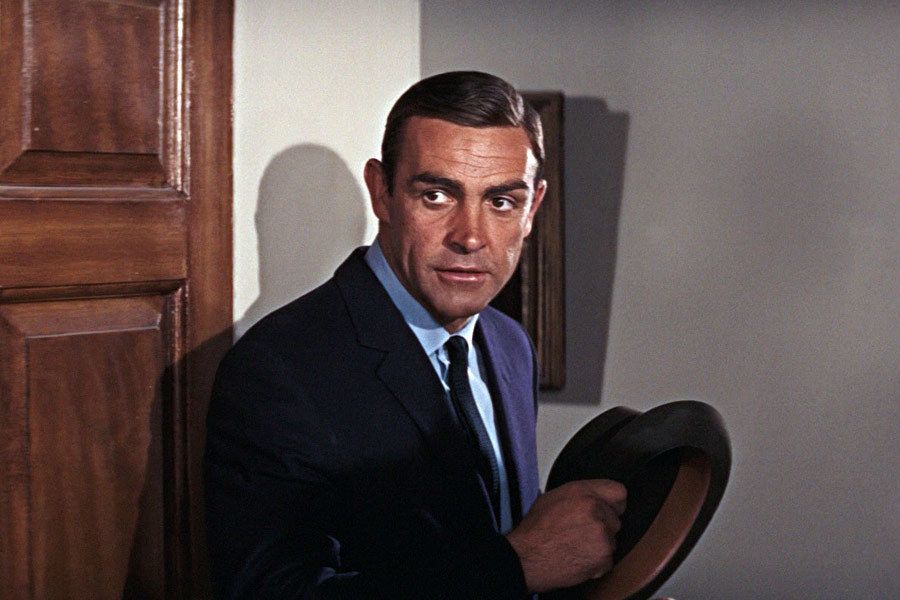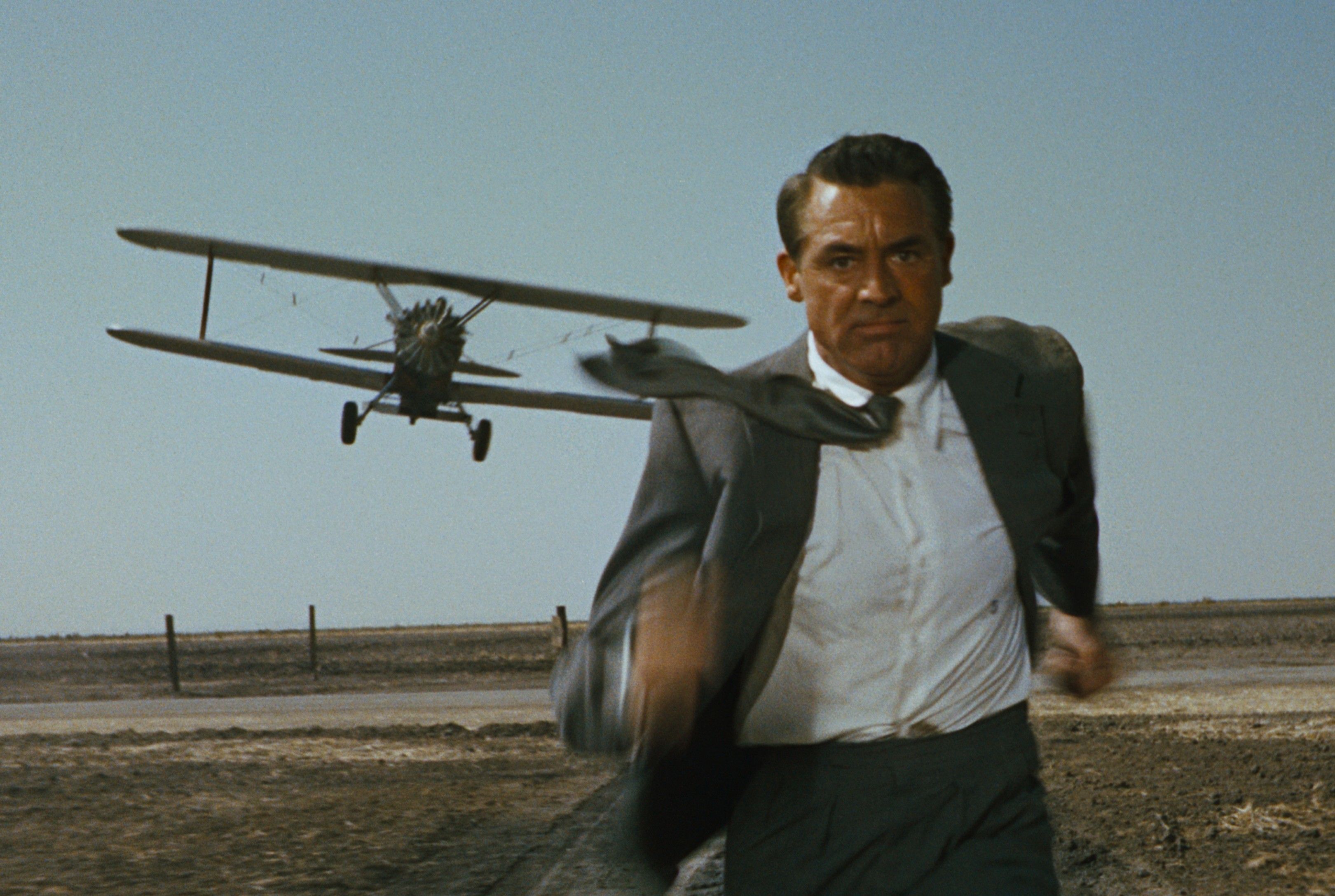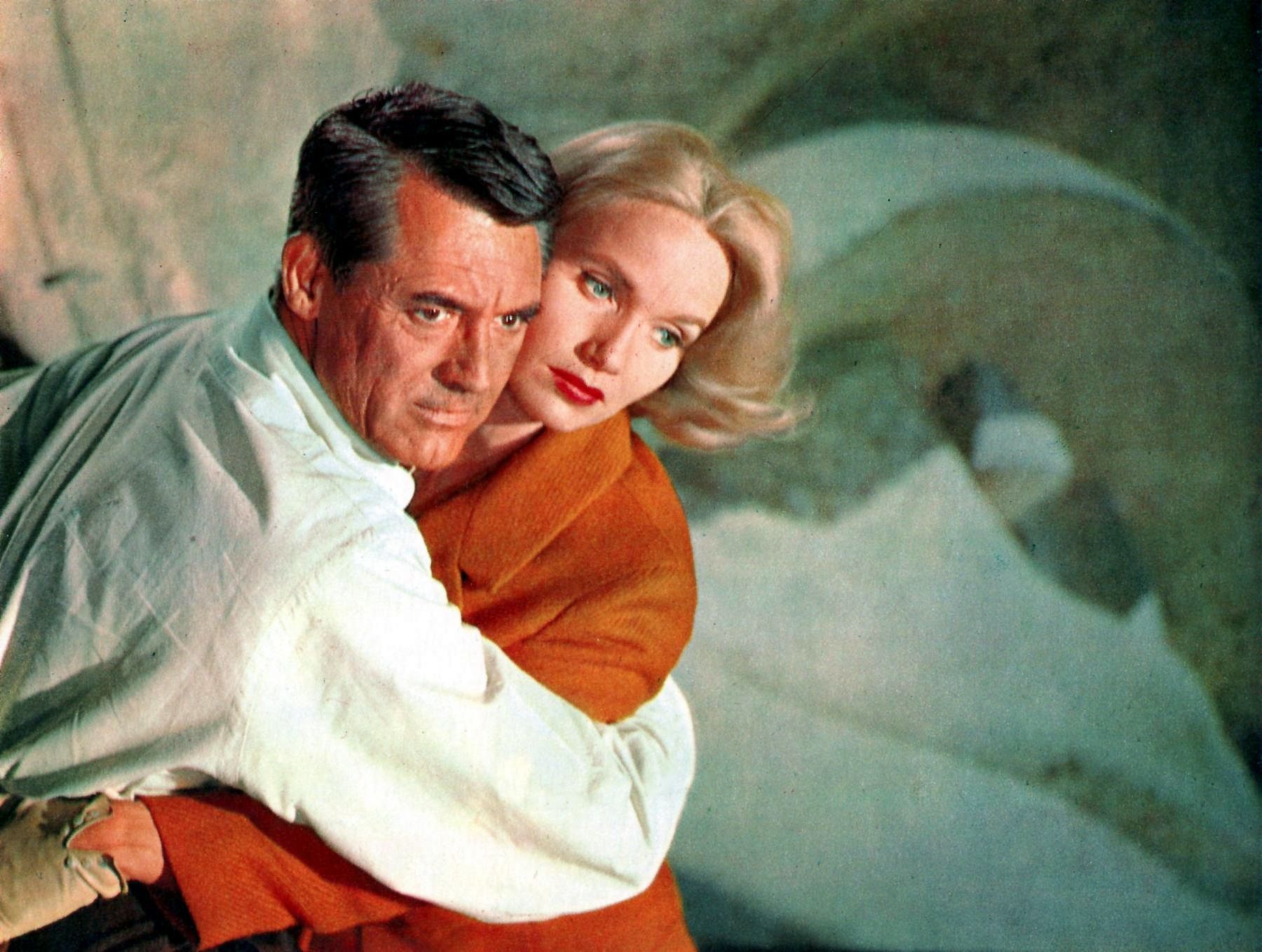At this point, there are few film franchises that feel as well-established as the James Bond series. So much so that Bond feels like a genre unto itself, which would explain the volume of spy movie imitators that cropped up in the ‘60s as well as more modern action heroes that have tried to invert the spy genre by playing against Bond’s world-famous tropes. However, things were not always that way. When Ian Fleming’s character was first brought to the screen, Fleming was clearly looking for a certain aesthetic to accompany this character’s cool charisma, which is why he reached out to Alfred Hitchcock to helm the first James Bond movie and establish its tone and style. Obviously, this never came to fruition, but you can still see so much of Hitchcock’s influence in those early Bond movies as they worked on developing the series’ own signature style.
By 1959, Ian Fleming had published six James Bond novels and was looking to bring the character to the big screen. He was developing an early screenplay of what would later become the 1965 Bond film, Thunderball, and had Hitchcock in mind to direct what would have been Bond’s first outing at the movies. So Fleming reached out to Hitchcock via telegram, outlining both the plot of the movie while also proposing that The Master of Suspense helm the film in question. It’s unclear whether Hitchcock ever read Fleming’s Thunderball script, but the two men never met in person and the film never materialized. Coming on the heels of North By Northwest, it was clear that Hitchcock wanted to move beyond the spy thriller genre and focus on his next project, a little film you may have heard of called Psycho.
Even though Hitchcock didn’t end up influencing the 007 series directly by taking on this first Bond adaptation, you still see his fingerprints all over the early Bond movies. One reason is that Fleming had clearly seen North By Northwest while thinking about what a movie version of Bond would look like. He reimagined the character in his early Thunderball script to be more similar to Roger Thornhill (played by Cary Grant in North By Northwest) than the “ruthless, sadistic and misogynistic” Bond of his novels. This would also explain why Bond producers Harry Saltzman and Albert R. Broccoli were originally looking to cast Cary Grant as James Bond, but figured they wouldn’t be able to persuade the star to do multiple films (though it would’ve prematurely started the trend of Bond often being way too old to be convincingly sexy). Even though Sean Connery ended up playing the character as a slightly tougher Bond than Grant would’ve been, there’s still plenty of parallels between North By Northwest and early Bond films like Dr. No, From Russia With Love, and Goldfinger.
Released in 1959, North By Northwest was what screenwriter Ernest Lehman intended to be “the ultimate Hitchcock movie”. It centers around a case of mistaken identity, as Cary Grant’s Roger Thornhill, a mild-mannered ad executive, is incorrectly presumed to be a man named Kaplan. He finds out how sought-after Kaplan is when he’s kidnapped and forced to drink his weight in bourbon and drive off a cliff in what would be an assumed car accident. However, Thornhill survives and after trying to prove to his mother and the police that he was kidnapped, ends up at the U.N., trying to find Townsend, the man whose estate he was taken to the night before. When Thornhill finally meets Townsend, he realizes there’s been another mix-up. Though before he can process this, Townsend is killed by an airborne knife thrown by one of the goons present on the night of Thornhill’s kidnapping. Then, seen literally taking the knife out of Townsend’s back, Thornhill is presumed to be a murderer, which sends him on the lam while being further ensnared in a conflict between an unnamed U.S. government agency and a group of enemy spies.
Just on the surface, North By Northwest shares plenty in common with the James Bond films in terms of the intricate plotting that intertwines Cold War politics, lots of double-crossing, and a bit of implied offscreen sex. Much like Bond, Thornhill is a man who is constantly on the move. We’re first introduced to him in New York, then taken by train to Chicago (and the midwest’s rural farmland), before finally ending up at Mt. Rushmore in South Dakota. Obviously, the Bond movies would whisk their audiences away to much more exotic locations than these very traditionally American ones, but the fact that North By Northwest includes these much bigger forces like the U.N. and U.S. intelligence gives the sense that he’s part of some grander story. This relates somewhat to how the Bond movies capitalized on the whole “jet-set” mentality that permeated the ‘50s and ‘60s by drawing on the idea that in a time of less pronounced war, the world was yours for the taking.
This also gets at how the James Bond films succeed in making this character aspirational for a lot of people. Not just because he gets to travel the world, get the girl, and kill the bad guys, but also because of how attainable this feels considering the franchise places the character somewhere in between the more ruthless killer of Fleming’s novels and the reluctant spy we see in North By Northwest. Roger Thornhill is relatable because he’s the “beta Bond”, in that he’s built a life on avoiding adventure, runs away from every fight he’s presented with, and seems to actually respect women. Also, unlike Bond, he’s almost never in control of his circumstances, spending half the film confused as to why he’s been ensnared in this international intrigue and the other half trying to figure out how he can get out of it.
Connery’s Bond, on the other hand, can’t help but be in control of every situation he’s in, even when he’s strapped to a table with an absurdly slow laser beam aimed toward the body part he seems to prioritize most. He’s usually one step ahead of the bad guys, and even when he’s not, he is usually armed with some split-second decision that will get him out of any situation that his bravado (or his libido) has gotten him into. A prime example of this contrast is in North By Northwest and the early Bond films’ differing approaches to humor, as nearly every comedic moment in North By Northwest stems from how in-over-his-head Thornhill is. Meanwhile, Bond is always armed with a confident (but goofy) one-liner, whether it’s commenting that a goon getting electrocuted is “shocking” or that another goon who’s been impaled by a spear gun “got the point”. The man simply never breaks a sweat, while all Thornhill seems to do is sweat. There’s perhaps no better example of this difference than the helicopter chase scene in From Russia With Love that serves as a not-so-subtle homage to North By Northwest’s iconic crop-duster scene. While Thornhill gets out of being chased by a plane by pure luck, with the plane accidentally crashing into an oil tanker, Bond blows up the helicopter chasing him by shooting the grenade-brandishing pilot as if he’d somehow planned this all along.
As much as Roger Thornhill laid the groundwork for another well-dressed thrill-seeker, North By Northwest’s most important contribution character-wise may actually be Eve Kendall, who’s played wonderfully by Eva Marie Saint. About halfway into the film, Thornhill meets Eve on a train and instantly falls for her, though it quickly becomes obvious that she’s been playing him the whole time and is working for Vandamm (played by James Mason), the film’s villain. Seeing as she’s cool, intelligent, and has a knack for deception, she’s very much the prototypical Bond girl. She’s also what Bond girls would be in a perfect world, even if the film sells her out a bit by making her a damsel-in-distress in the film’s climax. Her relationship with Thornhill also establishes the dynamic that would exist between Bond and so many of the women he would go to bed with, constantly being on edge about where their allegiances lie but also too interested in getting laid to care.
As much as Eve Kendall was the blueprint for your typical Bond girl, like a lot of elements in North By Northwest that made their way into Bond films, they weren’t exactly new. The concept of “the cool Hitchcock blonde” had already been well-established in earlier Hitch movies like Rear Window and Vertigo. So the inclusion of this type of character must have felt like a no-brainer to writer Ernest Lehman, since he was trying to top every Hitchcock movie by incorporating elements from the director’s previous films, but doing it bigger and bolder. The film’s most obvious ancestor would be Hitchcock’s 1939 film The 39 Steps, which in its broad strokes is more or less the same plot as North By Northwest, as it centers around a guy suffering a case of mistaken identity that gets him entangled in the workings of an international spy ring. Also, while North By Northwest feels bound to its American setting, Hitchcock’s use of exotic locations in thrillers like 1946’s Notorious (set in Brazil), 1955’s To Catch A Thief (set on the French Riviera), and 1956’s The Man Who Knew Too Much (set partially in Morocco) have a globetrotting air of extravagance that no doubt influenced the way the 007 movies acclimated Bond with the rest of the world.
Just as North By Northwest amped up the more over-the-top elements of Hitchcock’s filmography for the sheer sake of entertainment, the Bond movies ended up doing the same with their source material over the course of the ‘60s. By the time of 1964’s Goldfinger and 1965’s Thunderball, the series had solidified a potent formula involving flamboyant villains and an emphasis on gadgets that veered the series outside the realm of more grounded Cold War spy stories and into something resembling our modern blockbuster. While this direction drove the Bond series farther away from its Hitchcock-inspired roots, the two still remained intertwined. When he was at the height of his Bond fame, Sean Connery sought out Hitchcock in the hopes of bringing some legitimacy to his career by acting in Hitchcock’s Marnie. Also, it seems as though Hitchcock couldn’t escape the shadow Bond cast over the spy thriller genre, as his next two releases after Marnie were the Cold War spy movies Torn Curtain and Topaz, both of which ended up being critical and commercial disappointments. Though even if Hitchcock was dismayed by his inability to use these films to replicate the success of the Bond films, it didn’t really matter in the end, since Hitchcock already had such a pivotal role in laying the groundwork for this massively successful series.




